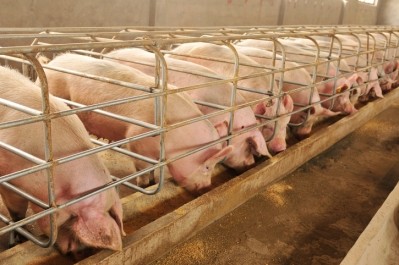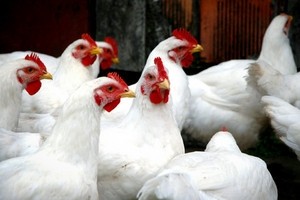Calculation of ecological footprint of amino acids and phytase ‘just got easier’
![PCRs said to make existing life cycle assessments (LCAs) of various speciality feed ingredients comparable. [pic: (c) istock.com]](/var/wrbm_gb_food_pharma/storage/images/_aliases/wrbm_large/publications/feed/feednavigator.com/article/2015/12/01/calculation-of-ecological-footprint-of-amino-acids-and-phytase-just-got-easier/1289023-2-eng-GB/Calculation-of-ecological-footprint-of-amino-acids-and-phytase-just-got-easier.jpg)
The development of PCRs is an important achievement for the specialty feed ingredients sector as they establish common agreed rules to be used by all, said the International Feed Industry Federation (IFIF) and the EU Association of Specialty Feed Ingredients and their Mixtures (FEFANA).
PCRs make existing life cycle assessments (LCAs) of various speciality feed ingredients comparable. “They allow for the assessment of product groups instead of single products and they provide category specific guidance for estimating and reporting product life cycle environmental impacts,” explained Alexandra de Athayde, IFIF executive director.
IFIF and FEFANA run the Speciality Feed Ingredients Sustainability (SFIS) initiative, which was set up to analyse the cradle-to- farm gate environmental performance of pig and broiler production with and without amino acids and phytase.
An SFIS study, published in February 2014, showed those additives reduce excretion of nitrogen and phosphorus into the environment, while at the same time reducing the recourse to finite resources such as phosphate.
Environmental performance
The livestock sector is under particular pressure to assess, improve and communicate on its environmental performance, while coping with the increasing demand for animal products.
“With emissions estimated at 7.1 gigatons CO2-eq per annum, representing 14.5% of human-induced GHG emissions, the livestock sector plays an important role in climate change,” found a 2013 report from the UN’s Food and Agriculture Organization (FAO): Tackling climate change through livestock – A global assessment of emissions.
The FAO report also indicated pig meat and poultry meat and eggs contribute 9% and 8% respectively to the sector’s emissions, while feed production and processing, and enteric fermentation from ruminants represent 45% and 39% of sector emissions, respectively.
So there is a need, as such, for practical solutions to improve the environmental performance of the sector, said Michael Binder, chairman of the technical board of the SFIS project.
“By setting PCRs, environmental assessments for [different] products, processes and services within the same category have the most uniform basis possible. The final PCR guidelines must be based on existing LCAs for representative products within the category.
Only by setting the same system boundaries [PCRs] properly, assessing at least the same impact categories, the farmer or feed miller can make the right choice for the right product,” he told FeedNavigator.
There are over 70 impact categories possible, said Binder. “Beside the well-known ones such as Global Warming Potential (GWP) caused by Greenhouse Gas (GHG) emissions, Eutrophication Potential (EP), Acidification Potential (AP), Primary Energy Demand (PED), a lot of others are applicable,” he added.
It is up to the applicant to choose the relevant ones, explained Binder. “For example, in the area of livestock production, only selecting GWP [as an impact category] would be erroneous since the main pollutants in livestock production are based on nitrogen containing compounds, which are responsible for AP and EP.
For speciality feed ingredients, at the very minimum, categories such as GWP and also AP and EP must be considered.
The SFIS industry consortium set up such rules for amino acids and phytase. Now [and potentially we are looking at other feed additives in the next phase of the project], we want to test the robustness of the rules,” he told FeedNavigator.
The SFIS initiative, including the development of PCRs, is building the bridge between the feed and the food sectors to improve the sustainability performance of the final food product, said Binder.








